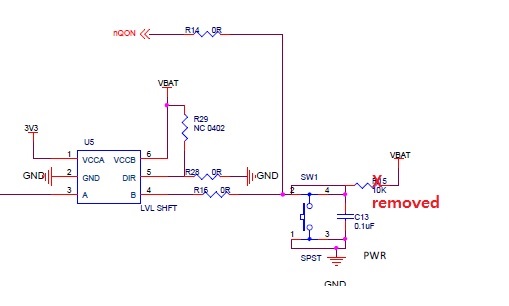Other Parts Discussed in Thread: BQ25895,
Could you let me know how I can contact for schematic/layout review?
One side is 2.8V, and the other side is a battery voltage and an active-low switch (nominal y 3.9V)
I'm trying to make certain the level is properly translated as well as there is no leakage from the battery to the 2.8V side when the 2.8V LDO is off.
Thanks,
Andrew


